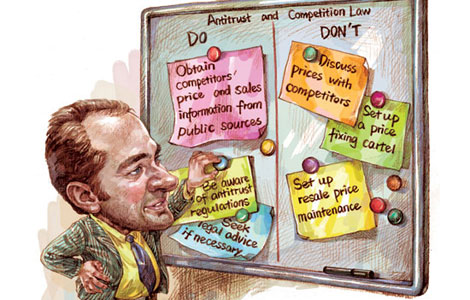Now invest in Asia's future
Updated: 2013-09-27 07:01
By Iwan J. Azis (China Daily)
|
|||||||||||
The US Federal Reserve announcement delaying the start of a slowdown in asset purchases gives Asian markets a bit of a reprieve but does not change the basic picture that the US is embarking on a gradual normalization of its monetary policy.
The big question is whether that normalization will keep driving investors out of Asian markets, further sapping the wind from the region's economic sails and all but wrecking the most vulnerable economies, as happened in 1997 during the Asian financial crisis.
The quick answer is "no". A repeat of the 1997 crisis, when investors fled in droves and economies tanked, is not likely. Foreign exchange reserves are healthy in most countries, currencies are far more flexible, foreign debts are lower, most economies have current account surpluses and most countries have some room for monetary and fiscal adjustment should it be needed. The growing use of local currency bonds instead of foreign debt means borrowers are not as affected by currency devaluation, and longer tenors in foreign borrowing also means constant refinancing is not needed.
However, there are certainly risks ahead and markets and economies need to work now to brace themselves for a period of higher borrowing costs, some market volatility and slower economic expansion. Even before the latest market turmoil, growth was slowing, particularly in China, the world's second largest economy.
As quantitative easing begins to subside, it will be harder and more expensive for enterprises and governments to raise funds, especially in foreign currencies. That will hurt a region desperate to boost investment, particularly in the infrastructure needed to keep economies expanding.
Asia has a huge stockpile of foreign reserves but they have been invested more in foreign markets like the US than in emerging Asian markets. The key is to mobilize these funds for longer-term investments that would power economic growth. Aside from keeping any potential crisis at bay, it would feed private business in driving growth. Government stimulus spending kept the region's economies chugging along after the 2008-09 global financial crisis. Now, the baton must be passed to the private sector.
But mobilizing capital for private investment to drive growth is tricky. Since the 1997 Asian financial crisis, local currency bonds have emerged as an alternative to bank financing or foreign borrowing. Although bond markets have grown dramatically - from about $800 million to $6.5 trillion in the last 12 years - they have a long way to go before reaching the levels required to fuel economic growth and, more importantly, infrastructure spending. Regulatory issues and market structures have made it unduly difficult for regional investors to invest in regional markets. This must change if mobilizing Asian savings for Asian investment is to become reality.
Take infrastructure, for example. With the prominent exception of China, the region missed an opportunity to ramp up infrastructure spending in the post-global financial crisis period of ample, quantitatively eased, liquidity. Now, with financing conditions becoming less favorable, tougher times are ahead. This is where bond financing, for example, can serve to bridge the financing gap - by attracting a new class of investors. Institutional investors like pension funds can build stable cash flows from infrastructure projects by holding long-term bonds.
But to create vibrant bond markets that offer long-term financing for long gestation infrastructure, much more needs to be done. For the part of projects to be financed by bank, securitization can help manage risk and lengthen repayment deadlines. And governments and multilateral lenders can provide guarantees to boost potential bond issuance to investment grade.
To ease worries among lenders about whether projects are viable or not, governments can make it mandatory for infrastructure projects to provide information on the key financial and performance variables. Investors need to trust issuers, the market and the project itself. But governments can do most to mobilize finance by continuing to improve the investment climate - most visibly by building a predictable and transparent legal and regulatory environment.
Emerging Asia is most certainly not on the brink of financial crisis. But recent market turmoil should stand as a warning to Asia's policymakers that the region is facing a new, more unpredictable future where greater efforts have to be made to get the financial and physical infrastructure needed to keep the region's economies forging ahead.
The author is head of the Office of Regional Economic Integration, Asian Development Bank.
(China Daily 09/27/2013 page9)
Related Stories
Bad decisions can hamper US economic growth: Obama 2013-02-03 02:22
US economic growth accelerates to 3.1 pct in Q3 2012-12-20 23:51
Today's Top News
Russia to guard Syria chemical weapon destruction
Interpol issues arrest notice for 'white widow'
Vice-Premier urges more cooperation in Eurasia
Foreign suppliers dominate
Early fish ancestor found
Joining talks on trade in services
Courier reaches for the sky with drone
New legal era for Shanghai FTZ
Hot Topics
Lunar probe , China growth forecasts, Emission rules get tougher, China seen through 'colored lens', International board,
Editor's Picks

|

|

|

|

|

|





